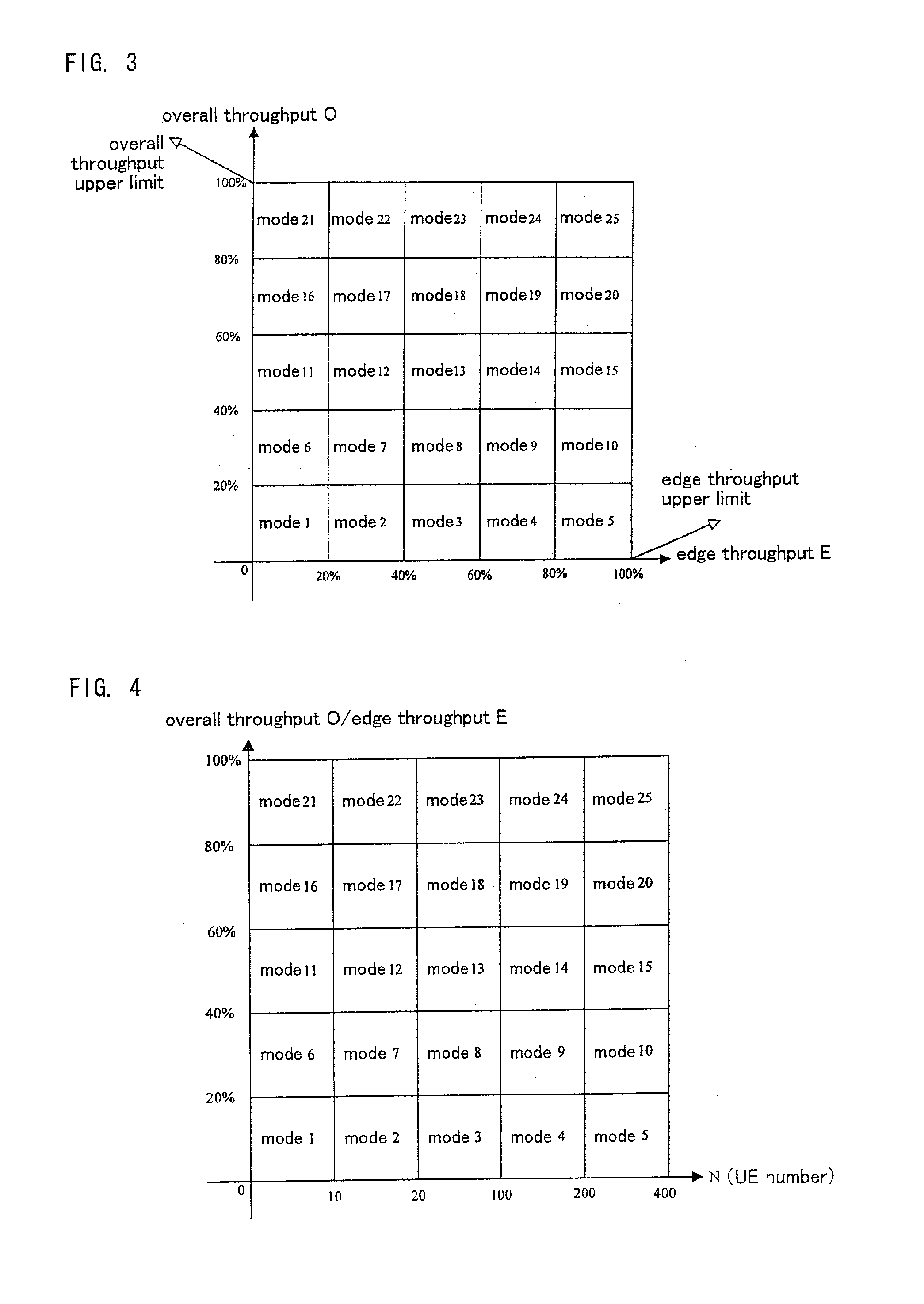Mobile communication system, base station, user equipment, and communication method
- Summary
- Abstract
- Description
- Claims
- Application Information
AI Technical Summary
Benefits of technology
Problems solved by technology
Method used
Image
Examples
embodiment 1
Semi-Static Pattern (FIG. 13 and FIG. 14)
[0045]the base station monitors all user equipments in an entire wireless cell (Steps S1001 and S1101).
[0046]As shown in FIG. 1, in the semi-static pattern, the BS 500 determines K kinds of modes (Mode_1, Mode_2, . . . Mode_K−1, Mode_K as shown in FIG. 2) corresponding to the number of resource blocks which the user equipment feeds back based on metrics such as overall throughput O of the wireless cell, edge throughput E of the wireless cell, the number of UEs 100 N, etc. The principle of mode determination is guaranteeing communication fairness of user equipments and improving the overall or edge throughput of the wireless cell.
[0047]FIG. 3 is a schematic drawing illustrating modes transmitted by the base station in which the base station divides the transmission mode into 25 modes according to the overall throughput O and edge throughput E of the wireless cell. Because the number of UEs 100 N directly affects the overall throughput O and ed...
embodiment 2
BS Dynamic Pattern (FIG. 17 and FIG. 18)
[0066]the base station monitors all user equipments in an entire wireless cell (Steps S1201 and S1301).
[0067]As shown in FIG. 1, in the BS dynamic pattern, the BS 500 determines K kinds of modes (Mode_1, Mode_2, . . . Mode_K−1, Mode_K as shown in FIG. 2) corresponding to the number of resource blocks which the UE 200 feeds back based on metrics such as overall throughput O of the wireless cell, edge throughput E of the wireless cell, the number of UEs 200, etc. The principle of the mode determination is guaranteeing communication fairness of each user equipment and improving the overall or edge throughput of the wireless cell. Each mode corresponds to one number (M) of resource blocks that should be fed back as shown in FIG. 16.
[0068](2) the base station transmits K kinds of modes or K kinds of reference numbers of feedback resource blocks to all user equipments within the entire wireless cell through signaling manner (Steps S1202 and S1302).
[...
embodiment 3
UE Dynamic Pattern (FIG. 19)
[0082]the base station monitors all user equipments in an entire wireless cell (Step S1401).
[0083]As shown in FIG. 1, in the UE dynamic pattern, the BS 500 monitors all user equipments in the entire wireless cell and calculates metrics such as overall throughput O of the wireless cell, edge throughput E of the wireless cell, the number of UEs 200, etc.
[0084](2) each user equipment within the wireless cell listens to the above described modes and performs decision (Step S1402).
[0085]Each UE 300 within the wireless cell adaptively decides the number of resource blocks (as shown in FIG. 9) which needs to be fed back according to open / closed loop pattern Ci, MIMO pattern Si (Single User MIMO, Multi-user MIMO, beam-forming MIMO, transmit diversity MIMO, etc.), service type Ti, path loss Pi, moving speed Vi or bit error performance Bi of the user equipment itself.
[0086](3) the user equipment feeds back downlink channel quality indicator information (Step S1403)...
PUM
 Login to View More
Login to View More Abstract
Description
Claims
Application Information
 Login to View More
Login to View More - R&D
- Intellectual Property
- Life Sciences
- Materials
- Tech Scout
- Unparalleled Data Quality
- Higher Quality Content
- 60% Fewer Hallucinations
Browse by: Latest US Patents, China's latest patents, Technical Efficacy Thesaurus, Application Domain, Technology Topic, Popular Technical Reports.
© 2025 PatSnap. All rights reserved.Legal|Privacy policy|Modern Slavery Act Transparency Statement|Sitemap|About US| Contact US: help@patsnap.com



